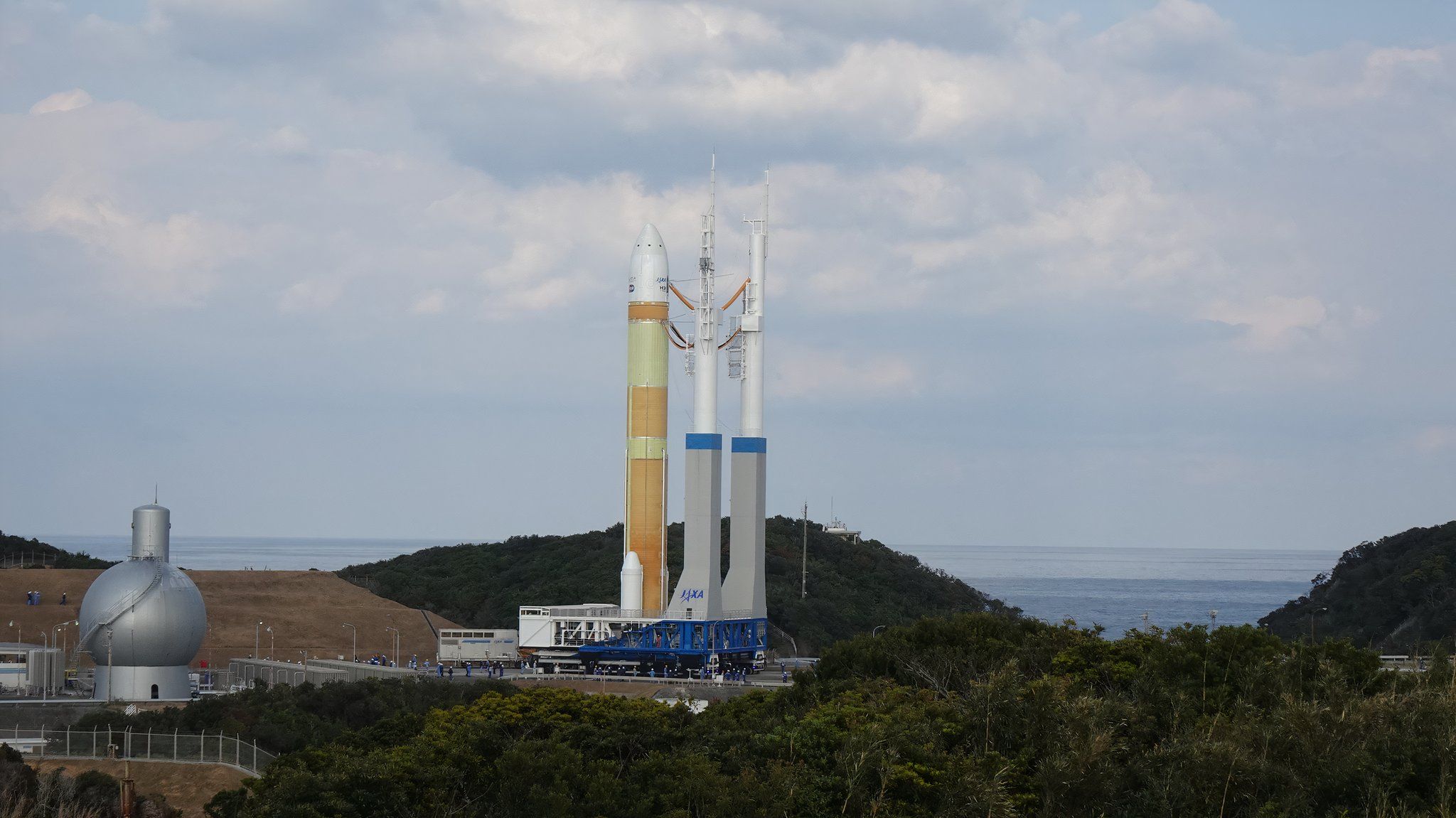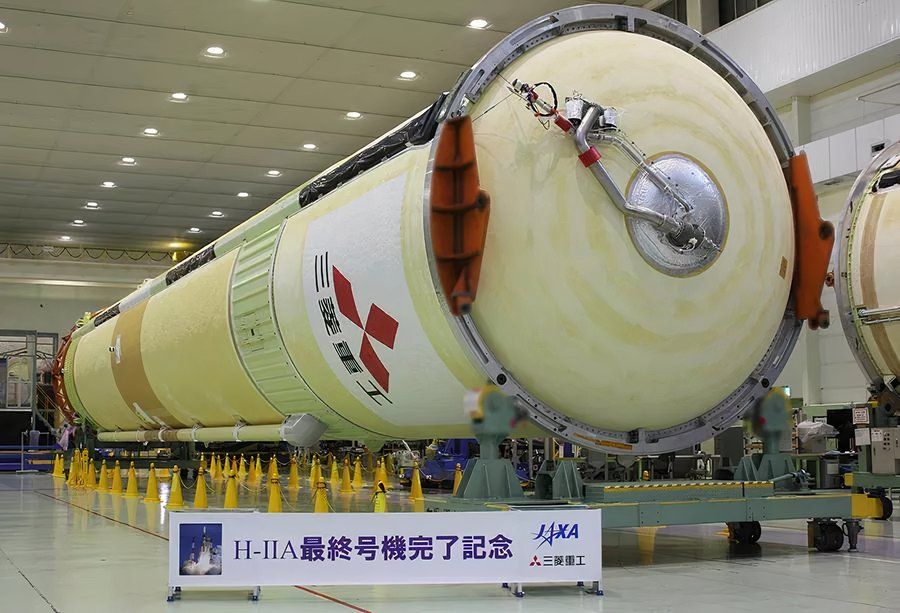On September 26, 2024, Japan, for the second-to-last time, used a Mitsubishi Heavy Industries (MHI) H-2A expendable rocket to put an information-gathering satellite into orbit. The “IGS Radar 8” satellite is a secret Japanese radar reconnaissance satellite that the Cabinet Satellite Information Center will use to monitor Japan’s national defense and civil natural disasters.
The H-2A rocket, topped with the IGS Radar 8 satellite, lifted off from Japan’s Tanegashima Space Center on the southeastern tip of Tanegashima at 14:24 local time on Thursday. According to Mitsubishi Heavy Industries (MHI), everything went according to plan, with the satellite headed for a sun-synchronous orbit (SSO) of the Earth. It is used for imaging, surveillance, and weather monitoring. A sun-synchronous orbit (SSO) satellite is a polar-orbiting satellite that passes over the same point on Earth at the same time every day.
About the Mitsubishi Heavy Industries (MHI) H-IIA rocket
The Mitsubishi Heavy Industries (MHI) H-IIA rocket is an expendable launch system that uses liquid fuel to launch satellites into space. Launches take place at Japan’s Tanegashima Space Center on Tanegashima island, 25 miles south of Kyushu. The facility was opened in 1969 by the National Space Development Agency of Japan (NASDA) and is now under the control of the Japan Aerospace Exploration Agency (JAXA).
Activities at the 2,400-acre Tanegashima Space Center include assembly, testing, engine fire testing, launching, and tracking satellites. The facilities at the Tanegashima Space Center include:
- The Yoshinobu Launch Complex
- The now-retired Osaki Launch Complex
- The Vehicle Assembly Building (VAB)
- The Second Spacecraft Test and Assembly Building
- The Takesaki Range Control Center
The Tanegashima Space Center is the beating heart of Japan’s space exploration and the site used to launch all Japanese satellites. All orbital satellite launches lift off from one of two launch pads:
- The LA-Y1 launch pad is used for H-II and H-IIA launches
- The LA-Y2 launch pad is used for H-IIB and H-3 launches
The H-IIA debuted in 2001 and has performed 49 missions, of which only one was unsuccessful. On November 9, 2003, while taking off to deploy an IGS 2 satellite. The vehicle failed to jettison one of its two solid rocket boosters and was consequently destroyed by a command from controllers on the ground.
Photo: Mitsubishi
On September 25, 2024, Mitsubishi Heavy Industries (MHI) announced that it had completed the production of the core stage of the 50th and last H-IIA. The rocket will now be transported from Mitsubishi’s Tobishima Plant in the Nagoya Aerospace Systems Works in Aichi Prefecture to the Tanegashima Space Center in Kagoshima Prefecture.
Following its final launch, which is expected to take place before the end of the year, it will be replaced by Mitsubishi Heavey Industries’ (MHI) new H3 launch vehicle. Japan’s new mainstay launch vehicle, the H3, was developed to be a highly flexible and cost-effective way of delivering satellites into space. Designed to deliver various payload weights and sizes, the H3 has three main factors, which are:
- Hi Flexibility: The H3 rocket offers a low-cost way of putting satellites into space by reducing the launch preparation period.
- Hi Reliability: Building on the success of the H-IIA launch vehicle, the new H3 is expected to be a highly reliable delivery method for launching satellites into space.
- High-cost performance: Compared to the H-IIA, the H3 will be less expensive to launch a satellite.
The H3 launch vehicle’s first stage, which comprises two stages, uses liquid oxygen and liquid hydrogen as a propellant and is assisted by either two or four strap-on solid rocket boosters that use hydroxyl-terminated polybutadiene (HTPB) as a propellant. The first stage is powered by either two or three cryogenic rocket engines, LE-9 engines. The second stage of the H3 launch vehicle is powered by a single LE-5B engine that uses a mixture of liquid oxygen and liquid hydrogen as fuel.
The first launch of the H3 on February 17, 2023, ended in failure two minutes into the flight. After successfully jettisoning the solid rocket boosters, the H3 failed to ignite the second stage, giving controllers on the ground no option but to use the self-destruct command. A year later, a second attempt was successful, with the H3 rocket reaching the desired orbit.
The Japanese space program
Following the end of WWII, after Emperor Hirohito announced the Japanese surrender on August 15, 1945, Japan was occupied by the United States. Under the conditions of the surrender, Japan was not permitted to build aircraft, which led to many aeronautical engineers losing their jobs. This all changed in 1951, following Japan signing a peace treaty with the conquering Allied powers. In the 1960s, Japan began work on a rocket that could be used to launch satellites into space. Japan successfully launched its first satellite, the Ohsumi, in cooperation with the United States on February 11, 1970, using an L-4S rocket. As the need for satellites to provide communications, weather observation, and television broadcasts grew, Japan began working on a larger rocket called the “H-I.”
Why Japan puts spy satellites in space
On September 1, 1998, North Korea, officially the Democratic People’s Republic of Korea, launched a multiple-stage Taepodong-1 rocket that flew over Japan before falling into the Pacific Ocean. In response to the North Korean rocket, Japan launched a radar and an optical spy satellite, both of which pass over the North Korean capital of Pyongyang each day.
Today, Japan has one of the world’s most advanced space programs and is able to design, build, and launch a full spectrum of satellites that perform the following jobs:
- Communications
- Broadcasting
- Weather observation
- Remote sensing
- Astronomical observation
- National Defense

Related
Elon Musk Rant: Is The FAA Treating Boeing Better Than SpaceX?
Elon Musk has taken to the social media site he rebranded as X (formerly Twitter) to complain about the FAA’s recent fines imposed against SpaceX for launch violations. This week, the FAA proposed combined civil penalties totaling $633,000 against the company.
According to the FAA’s announcement: “In May 2023, SpaceX submitted a request to revise its communications plan related to its license to launch from Cape Canaveral Space Force Station in Florida. The proposed revisions included adding a new launch control room at Hangar X and removing the T-2 hour readiness poll from its procedures. On June 18, 2023, SpaceX used the unapproved launch control room for the PSN SATRIA mission and did not conduct the required T-2 hour poll.” The FAA proposed $350,000 in civil penalties for these two alleged violations ($175,000 each).
Furthermore, the FAA claims: “In July 2023, SpaceX submitted a request to revise its explosive site plan related to its license to launch from the Kennedy Space Cen




